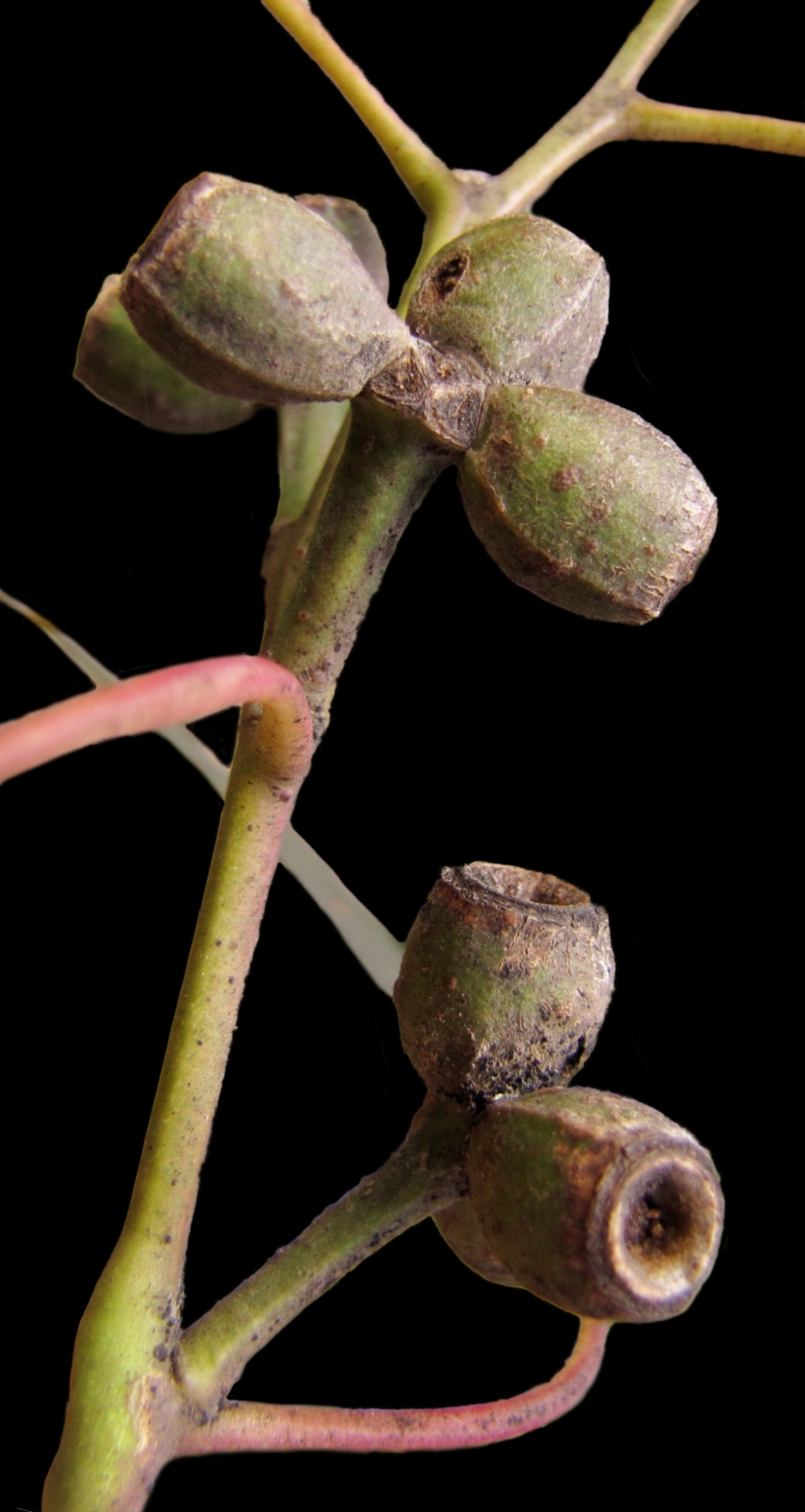Myrtaceae
Evergreen trees or shrubs. Leaves alternate, opposite or sometimes whorled, often dimorphic, simple, usually entire, dotted with small, conspicuous oil glands and often aromatic; stipules minute and caducous, or absent. Inflorescences variable, flowers lateral, terminal or in umbels or panicles, sometimes aggregated into head- or spike-like conflorescences. Flowers actinomorphic (in Victoria), rarely zygomorphic, usually bisexual, perigynous, often subtended by a pair of bracteoles; sepals usually 4 or 5, often reduced to persistent projections on rim of hypanthium; petals usually 4 or 5, often imbricate in bud then spreading, usually free, falling after anthesis; sepals and/or petals sometimes fused to form 1, or occasionally 2, opercula (in Eucalyptus); stamens 5–numerous, perigynous to almost epigynous, free or in bundles opposite the petals; anthers versatile or adnate, opening by longitudinal slits or by pores; ovary almost inferior to almost superior, 1–10-celled; style simple, usually short, sometimes long and bearded; stigma narrow or capitate. Fruit usually a loculicidal capsule fused to the ovary and opening at the apex, sometimes a nut or berry, rarely a schizocarp or drupe (neither in Victoria); seeds 1–many, variable in structure, lacking albumen; embryo straight, bent, curved or coiled.
About 155 genera with over 3000 species, mainly in the Southern Hemisphere and mostly in tropical and temperate regions, c. 75 native genera and c. 1400 species in Australia.
Jeanes, J.A. (1996). Myrtaceae. In: Walsh, N.G.; Entwisle, T.J., Flora of Victoria Vol. 3, Dicotyledons Winteraceae to Myrtaceae, pp. 942–1044. Inkata Press, Melbourne.
 Spinning
Spinning


